People with acid reflux suffer symptoms like heartburn. Diet is one common factor that affects the appearance of these symptoms. A fatty and sugary diet triggers stomach acid production, while a fiber-rich diet promotes digestion and prevents acid production.
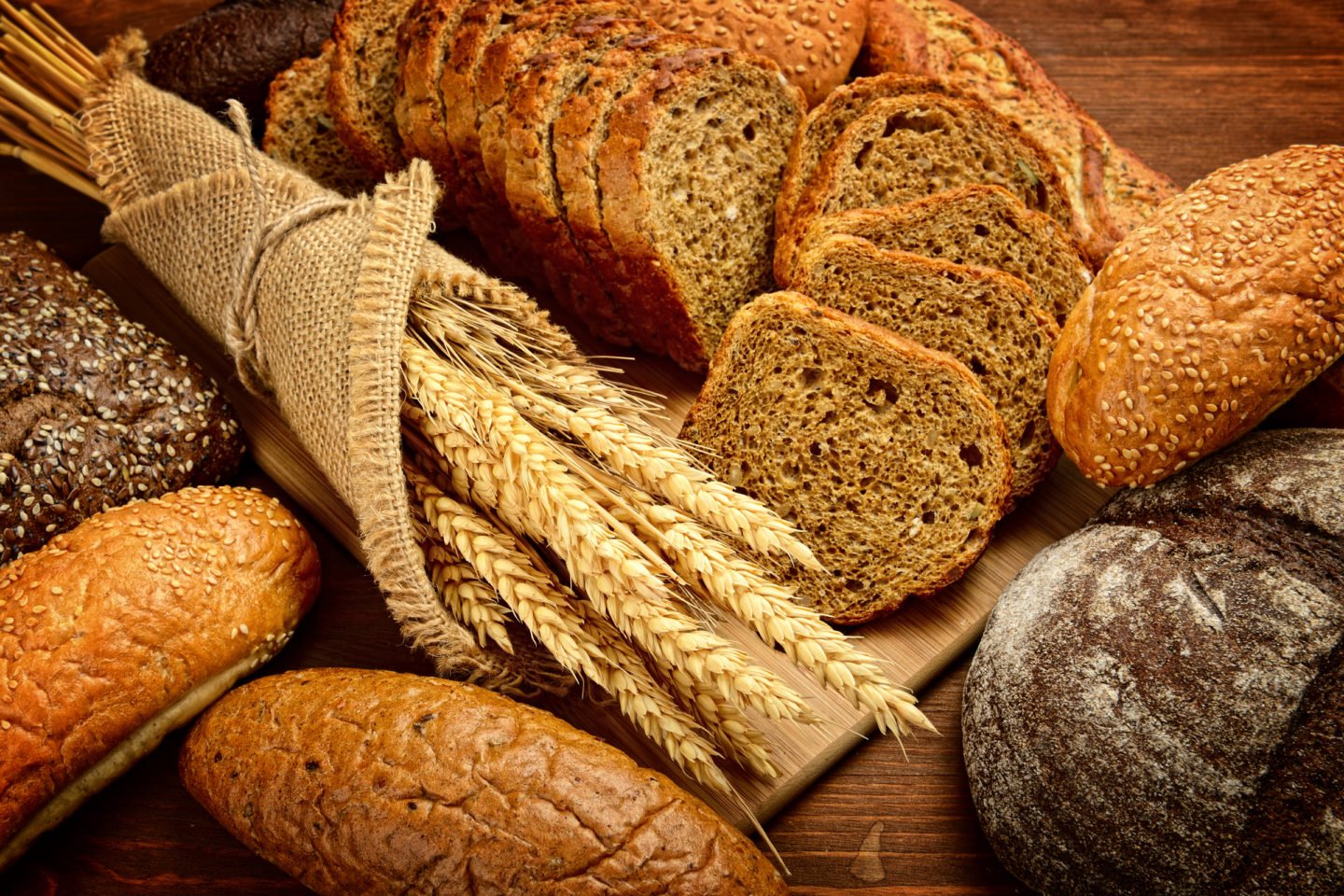
Whole grain bread like whole wheat bread, oatmeal bread, and sprouted whole grain bread contains high levels of fiber and other digestive compounds and is best for acid reflux sufferers. On the other hand, bread made from refined grains like white bread is high in carbs and low in fiber and should be avoided.
If you enjoy incorporating bread into your diet, you don’t have to skip it entirely, but you can prevent heartburn by substituting white bread with the types of bread discussed in this article. You can use any whole grain bread for your sandwiches, burgers, or toast. If you can’t find them in stores, you can also make them at home.
How Does Bread Affect Acid Reflux?
Bread is a rich source of carbohydrates. Although carbohydrate is one of the most important macronutrients, the digestive tract finds a hard time processing some starches, especially if there’s not enough fiber in the diet.
When food gets stored in the stomach for more extended periods, those particles are fermented by bacteria in the gut, resulting in excess stomach acid and gas. Since the stomach already has enough acid, the acid from fermented food triggers gastroesophageal reflux disease symptoms, such as chronic heartburn.

Since everybody loves bread, even those with acid reflux, the best way to prevent the symptoms is to increase fiber intake. Incorporating whole grains into one’s diet promotes digestion due to their high fiber content and supports overall health with vitamins and minerals.
White bread also contains high sugar, which results in overeating. Once sugar is ingested, the body releases insulin to cater to all its energy, making you even hungrier. Overeating promotes indigestion, and too much stomach content triggers the lower esophageal sphincter, pushing some of the contents back to the esophagus.
Since whole grains provide essential nutrients like fiber, the stomach feels fuller for a more extended period, preventing overeating and giving more space for the stomach to digest its contents.
Best Bread for Acid Reflux
100% Whole Grain Bread
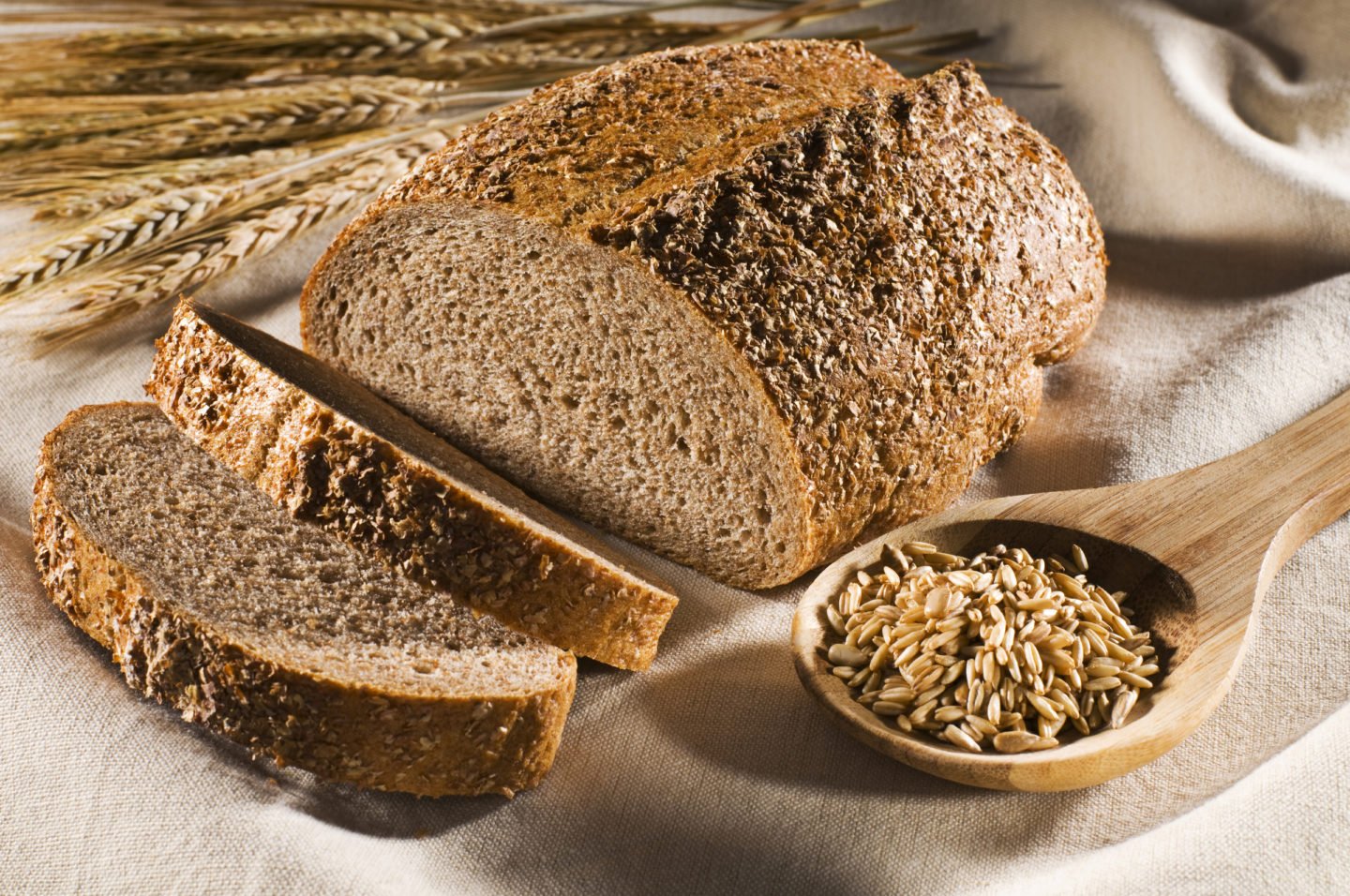
100% whole grain bread is the safest bread for people with gastroesophageal reflux disease. The grains in whole grain bread are entirely intact. Whole grain bread contains a variety of whole grains, including whole barley, whole grain oats, rolled oats, brown rice, and wheat (all rich in fiber, essential vitamins, and minerals).
Whole wheat bread is the most common form of whole grain bread, although it is only one variety of whole grain bread. These are the two healthiest selections in the market, with nutrients changing somewhat based on the specific grain mix. Below are some of the whole-grain bread you can choose from.
100% Whole Wheat Bread
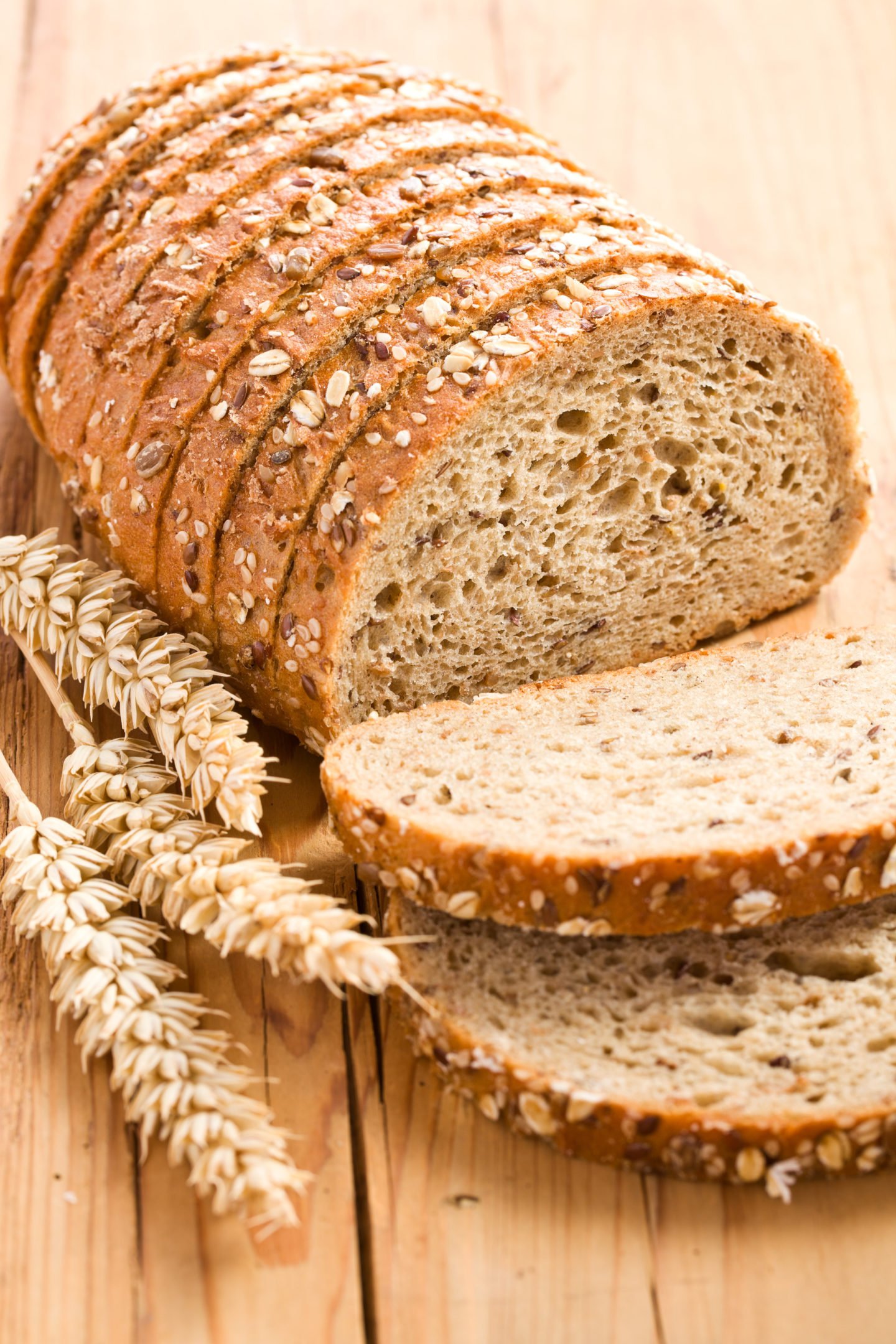
Most bread is manufactured from milled and broken-down grains, but whole wheat retains the entire grain, including the bran, germ, and endosperm, which make up the outer layer rich in dietary fiber and beneficial nutrients. In addition, epidemiological studies have linked whole-wheat consumption to various health advantages, including a lower risk of heart disease, type 2 diabetes, and some malignancies.
Every 100 grams of 100% whole wheat bread provides:
- 247 calories
- 13 g Protein (26% of DV)
- 7 g fiber (28% of DV)
- 248 mg Potassium (7% of DV)
- 20% Magnesium
- 13% Iron
Since whole wheat bread is rich in protein and fiber, it’s easier to digest and prevents overeating. If you’re purchasing whole wheat bread, take a look at the ingredients list, and whole-grain flour should be the first one listed to ensure quality. Also, do not mistake “whole wheat” bread with just wheat bread as wheat bread is made from wheat flour, which is the same as refined white flour, making it less healthy.
100% Sprouted Rye Bread
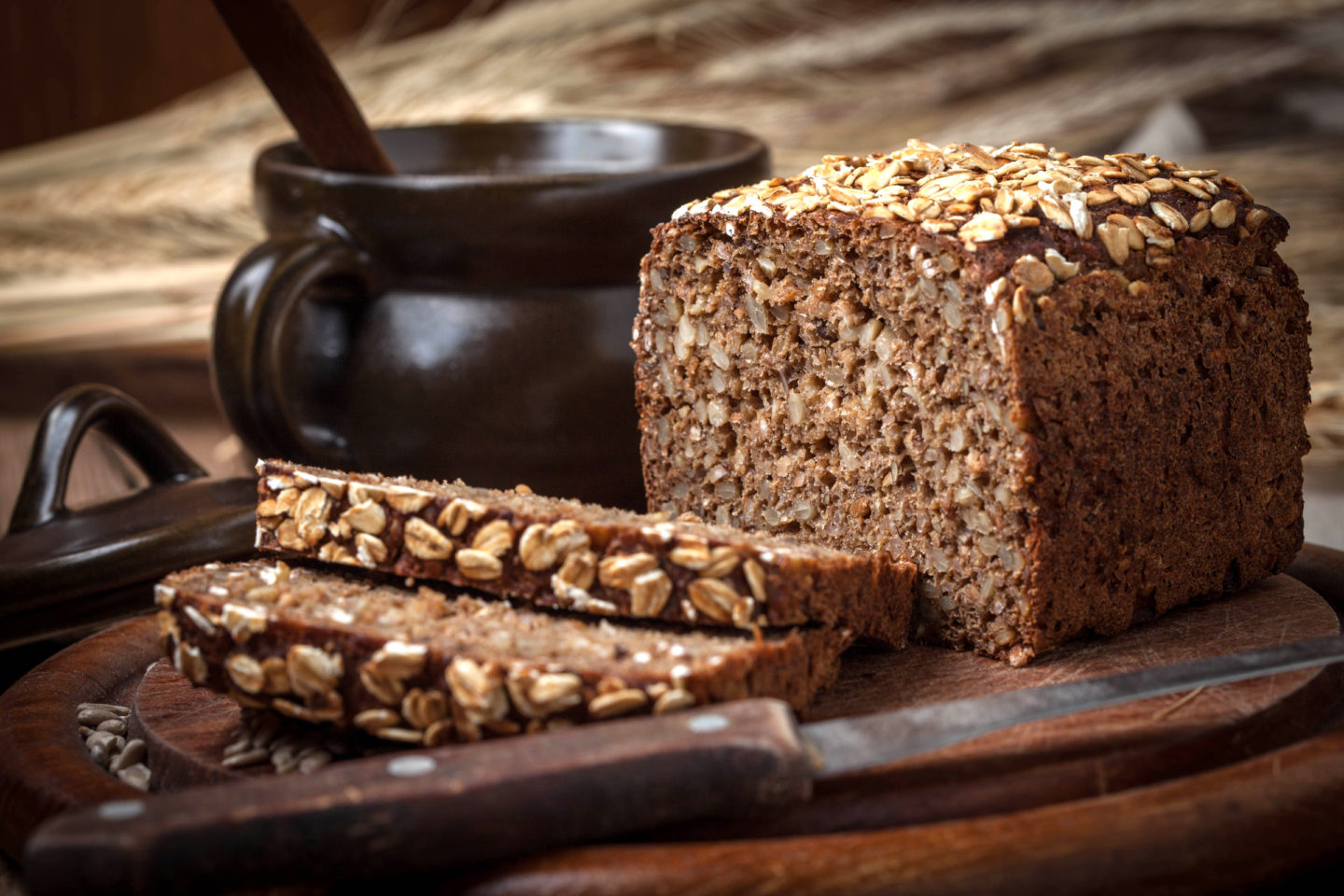
Rye bread is distinguished by its darker, denser texture. It looks like wheat bread but is usually baked exclusively with rye flour; however, some rye bread is produced using a mix of wheat flour and rye flour. Nevertheless, rye bread is frequently more healthy than wheat bread, given that it is made from 100% rye flour.
Rye bread may help you feel fuller for longer while lowering blood sugar levels. Moreover, a study conducted on rye’s effects on satiety revealed that eating rye prevents the release of too much insulin, maintaining a fuller feeling. Since overeating often results in more gastroesophageal reflux disease symptoms, maintaining satiety is the key to managing this problem.
Every 100 grams of Sprouted Rye Bread provides the following:
- 259 calories
- 6 g fiber (24% of DV)
- 166 mg Potassium (4% of DV)
- 9 g Protein (18% of DV)
- 15% Iron
- 10% Magnesium
- 7% Calcium
100% Multigrain Bread
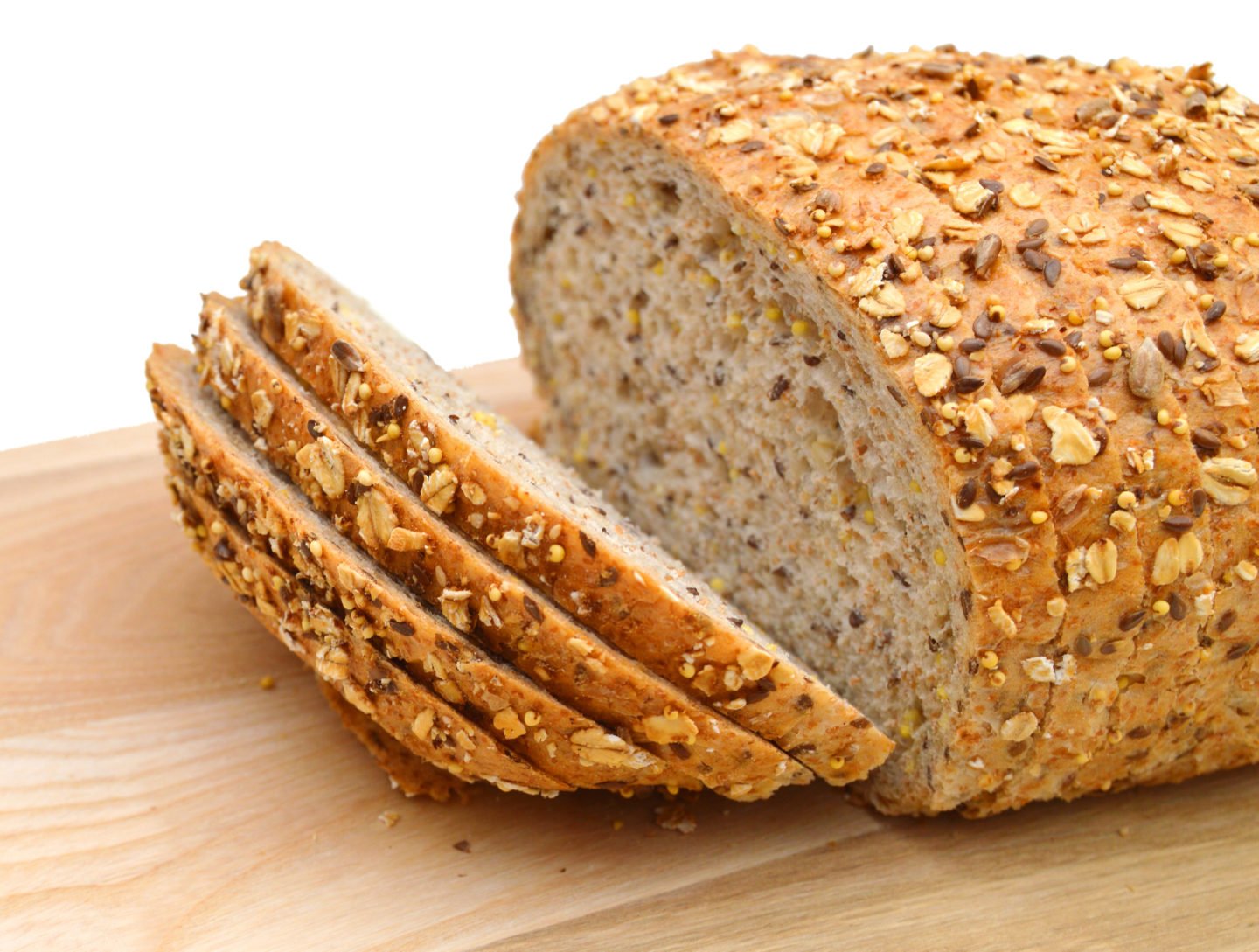
Multigrain bread is produced from various grains, as the name suggests. It's typically made from whole-grain flour, but it's healthier since it has at least three different grains rye, millet, barley, oat, or flax seeds. Aside from having an earthy flavor, the grains found in this bread are rich in protein, which helps prevent acid reflux.
However, do note that some commercially available bread is labeled as multigrain bread despite having refined flour as one of its ingredients. In addition, some brands advertise their product as multigrain bread even when containing only traces of oats, rye, and barley, or processed these grains to remove the bran and germ, so be sure to check the label if you decide to purchase ready-made ones.
Every 100 grams of multigrain bread provides:
- 276 calories
- 7.6 g fiber (30% of DV)
- 240 mg Potassium (7% of DV)
- 14 g Protein
- 14% Iron
- 8% Calcium
Oat Bread
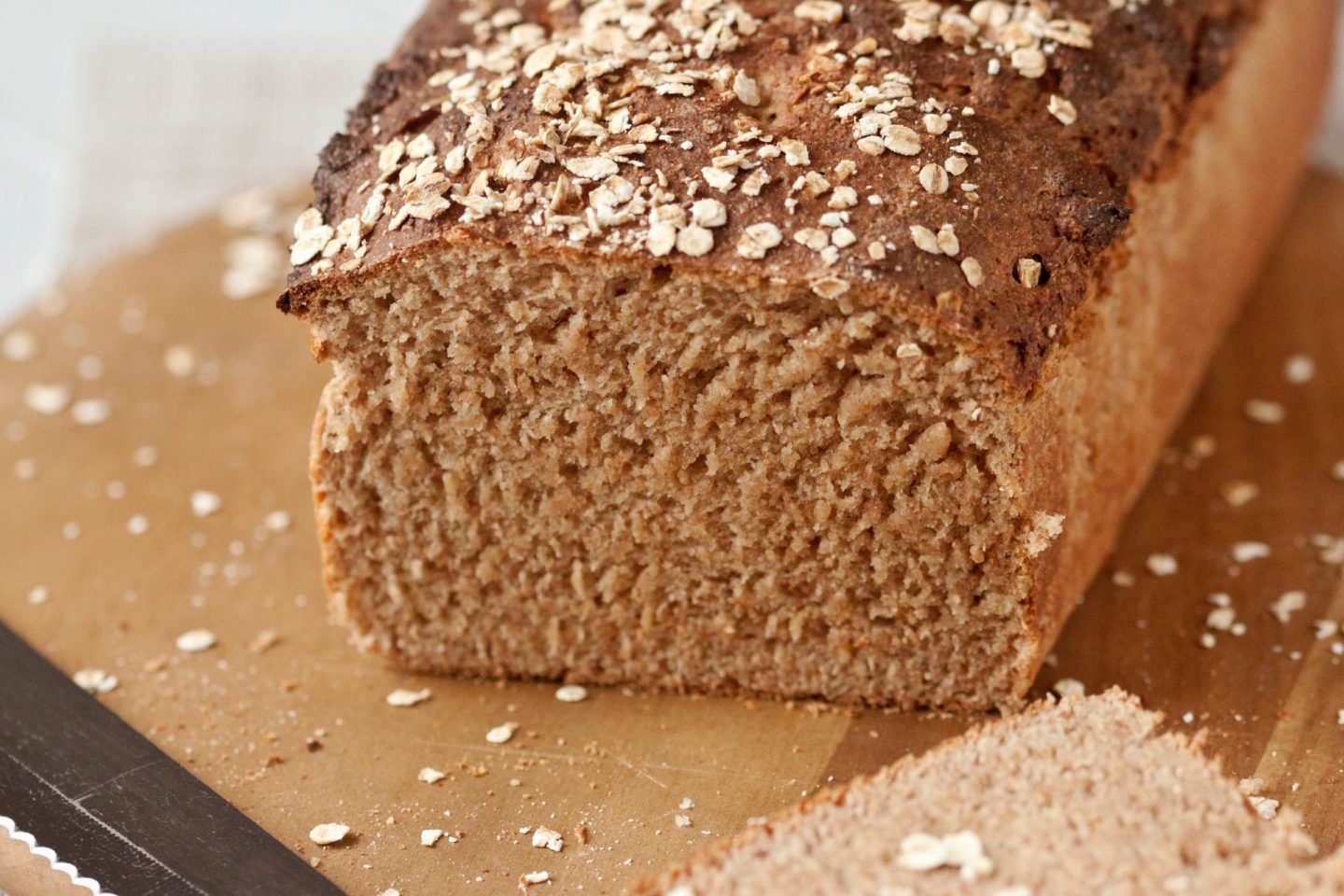
As the name implies, oat bread is made from whole oats, whole-wheat flour, water, yeast, and salt. Oats are one of the world's healthiest grains. They are gluten-free whole grains high in fiber, vitamins, minerals, and antioxidants.
Oat bread is an excellent choice if you suffer from gastrointestinal disorders like gluten intolerance. Eating glutenous food causes when you have gluten intolerance results in gassiness, bloating, diarrhea and abdominal discomfort, and other inflammation. However, when it comes to acid reflux, since oats contain high levels of fiber and antioxidants, they provide a digestive aid, preventing heartburn.
Like other grains, oats are considered a superfood as it contains everything you need in a day. In addition, oats contain beta-glucan, a powerful soluble fiber that promotes the growth of good bacteria in the gut, reduces sugar and insulin response, and makes one feel full for longer, preventing overeating that results in acid reflux symptoms.
Every 100 grams of oat bread contains the following:
- 269 calories
- 4 g fiber (14% of DV)
- 142 mg Potassium (3% of DV)
- 8.4 g Protein
- 15% Iron
- 5% Calcium
Homemade Whole-Grain Bread
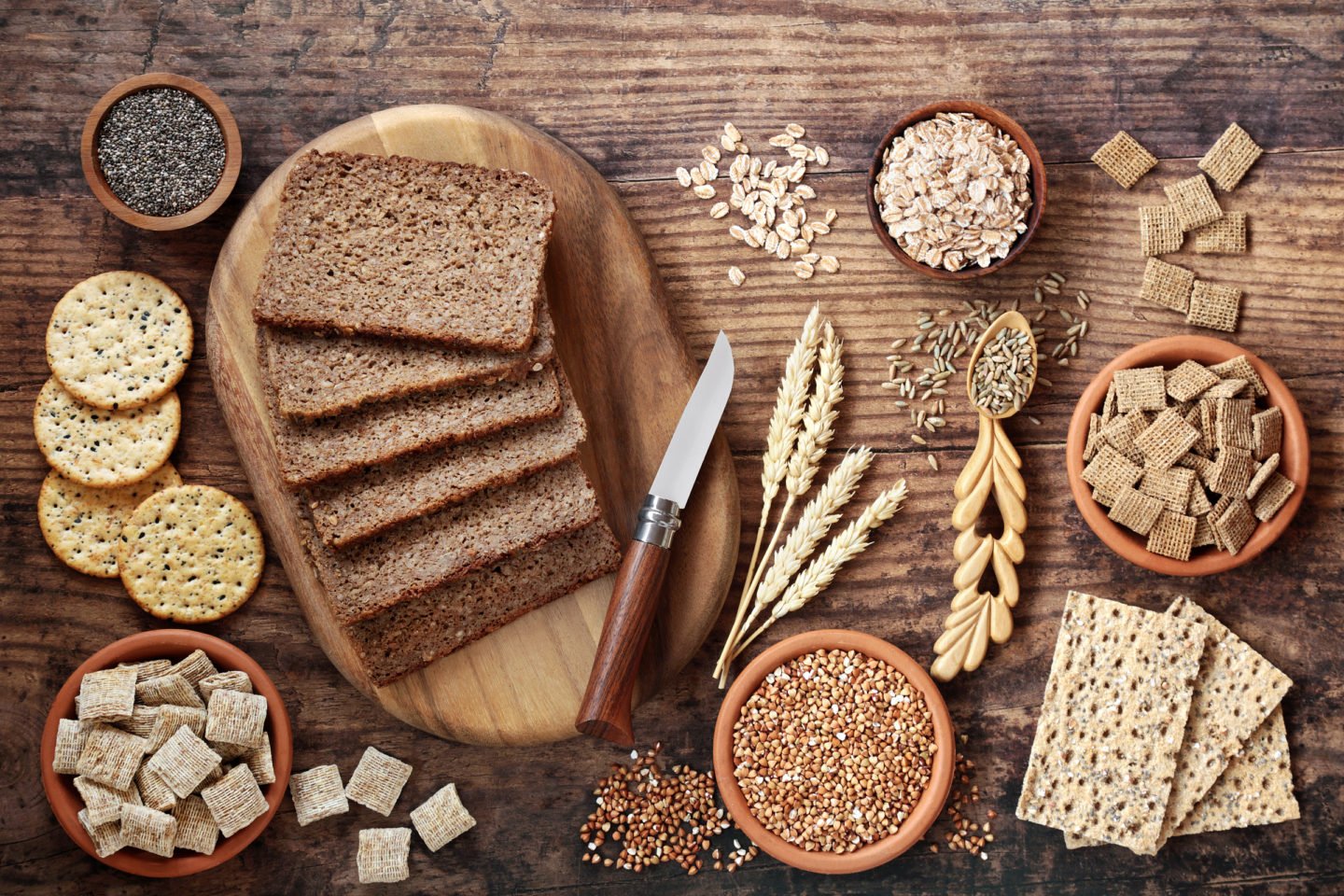
Making whole-grain bread at home is the safest choice for people with heartburn. This way, you will be in full control of the ingredients in the bread. If you have allergies to dairy and gluten, you can skip those, as well.
Harvard Nutrition Source published a Hearty Whole Grain Bread recipe that consists only of whole wheat flour, water, yeast, and salt. As long as the finished dough is not sticky, you can add additional grains or different types of flour or swap one kind of grain or flour for another.
Vitamin C improves yeast performance as yeast needs an acid activator. It also enhances the texture and keeps the loaf of bread fresh longer when combined with lecithin and pectin.
Other flours and grains that you can add to your bread are the following:
- Buckwheat flour
- Barley flour
- Rye flour
- Wheat bran
- Whole rolled oats
- Sunflower seeds
- Flax seeds
- Pumpkin seeds
You can also incorporate fresh fruit portions into your bread. Egg whites and lean meat are great additions, too. However, you should avoid fatty food like cottage cheese. Instead, eat more nuts and nut butter, like peanut butter, which can be used as a topper.
Related Questions
Whole grain bread is the best bread for acid reflux. Whole wheat bread, sprouted rye bread, multigrain bread, and oat bread are great examples. These types of bread contain high levels of fiber and other vitamins that support digestion while making one feel full for longer.
White bread worsens acid reflux. White bread is made from refined flour containing more carbohydrates and less fiber, making it an unhealthy option. In addition, eating white bread every day has been linked to overeating and obesity, two common triggering factors of acid reflux symptoms.
Yeast alone does not cause acid reflux. Yeast reacts with an acid to create carbon dioxide gases, making the dough rise. This action increases acidity. When baked, the pH of bread ranges from 5-6.5, making it a slightly acidic food.

Leave a Reply